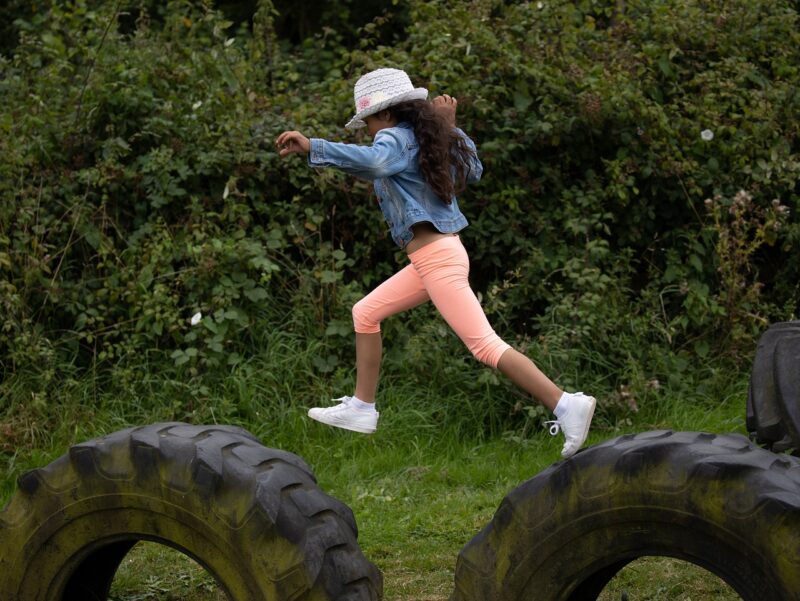How to Train for an Obstacle Course Race: Fitness, Endurance, and Agility Tips
November 13, 2024

Obstacle course races (OCRs) are thrilling events that combine running, climbing, crawling, and navigating through various physical challenges. These races not only test your physical fitness but also your mental toughness. Proper training is essential for success, enabling you to tackle the course’s demands effectively and prevent injuries. This article will discuss various strategies and workouts to help you prepare for your next obstacle course race, focusing on fitness, endurance, and agility.
1. Understanding the Structure of Obstacle Course Races
Before diving into training, it’s critical to understand what an obstacle course race entails. Generally, OCRs consist of a mix of:
- Running: Distances can vary, typically ranging from 3 miles for sprint races to over 10 miles for endurance races.
- Obstacles: Challenges can include walls to climb, ropes to ascend, mud pits, balance beams, and much more, each requiring different skills and strength levels.
- Recovery Time: While you won’t have traditional rest periods, understanding your limits and recovery strategies is necessary to sustain your performance throughout the race.
Understanding the race format will help you tailor your training program to improve specific areas effectively.
2. Building a Strong Aerobic Base
For any distance race, especially those with various obstacles, building an aerobic base is critical. Long runs can enhance your stamina and endurance. Here’s how to structure your running program:
- Weekly Long Runs: Dedicate one day a week to longer runs (6-12 miles). Gradually increase your distance to build endurance while keeping your pace conversational.
- Interval Training: Incorporate short bursts of speed (400m or 800m) into your runs to boost cardiovascular conditioning and simulate the variable intensity of races.
- Hill Sprints: Find a hill that offers business and sprint up, focusing on your form. This exercise develops leg strength and mimics the incline challenges you might face in OCRs.
Consistent running at different paces will create a robust cardiovascular base needed for managing the varied challenges on race day.
3. Incorporating Strength Training
Strength training complements running and is fundamental for successful OCR completion. Focus on functional strength targeting core, upper body, and lower body:
- Pull-ups: Essential for traversing obstacles requiring upper body strength. Start with band-assisted pull-ups if necessary and gradually work your way to unassisted ones.
- Box Jumps: This plyometric exercise improves explosive power and strengthens legs, which is vital for climbing and vaulting over obstacles.
- Core Workouts: A strong core stabilizes your body throughout various movements. Incorporate planks, side planks, and Russian twists into your routine to boost core strength.
Structured strength training is essential to build the endurance and power required for obstacles, maximizing your performance on race day.
4. Improving Agility and Flexibility
OCRs require agility and flexibility to navigate and overcome obstacles quickly. Incorporate the following into your weekly training:
- Agility Ladder Drills: Use an agility ladder for drills like lateral shuffles and in-and-out hops, improving your footwork and reaction time.
- Balance Exercises: Work on stability by practicing single-leg balance exercises or using a balance board. This can enhance your performance in challenges like balance beams.
- Dynamic Stretching Sessions: Include dynamic stretching before workouts to enhance flexibility and keep your muscles pliable, reducing injury risks.
Incorporating agility and flexibility training will help you maneuver through various race setups efficiently and safely.
5. Trail and Specific Obstacle Training
To best prepare for the unique challenges OCRs present, training in environments that reflect race conditions is invaluable:
- Find Local Trails: Use colds or hilly terrain for your long runs to simulate the varying ground conditions you’ll face during the race.
- Practice Obstacles:
Visit local gyms or obstacle training facilities that offer specific obstacles like wall climbs or monkey bars. This will help demystify the obstacles on race day. - Combine Workouts:
Set up a workout that includes running followed by a series of obstacle challenges, mimicking the race format and preparing your body for transitions.
Training under conditions that resemble race day will help your body adapt to the unique challenges you’ll face.
6. Mental Preparation for OCRs
Aside from physical training, preparing mentally for the race is crucial. Strategies for mental preparation include:
- Visualization Techniques: Spend time visualizing each obstacle in the race and imagine yourself successfully completing them to build confidence.
- Mindfulness Practices: Techniques such as meditation can help you stay calm under pressure and maintain focus throughout the race.
- Goal Setting: Establish clear, achievable goals for the race, whether finishing under a specific time or completing a set number of obstacles.
Building mental strength is just as important as physical training, enabling you to push through fatigue and overcome challenges.
Conclusion
Training for an obstacle course race requires a well-rounded approach focusing on fitness, endurance, and agility. By following the outlined strategies—building a solid aerobic foundation, strength training, improving agility, trail running, practicing obstacles, and mental preparation—you will be well-equipped to tackle your next OCR. Remember to listen to your body, allow for recovery, and stay dedicated throughout your training journey. With the right preparation, you can conquer the race and enjoy the thrilling experience of overcoming obstacles with determination and strength.






